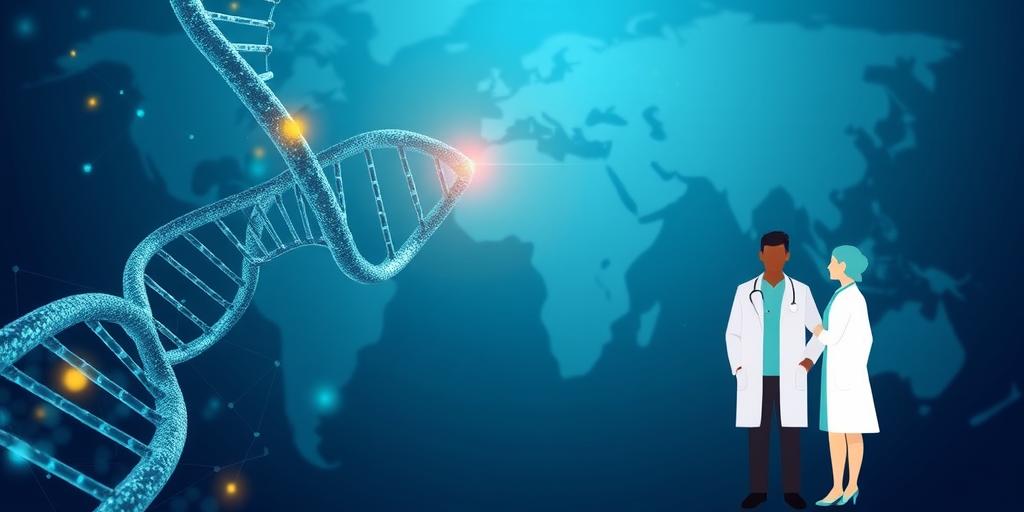Rare Diseases: Improving Diagnosis and Access to Treatment (India & Global 2025)
Rare diseases, often affecting a small percentage of the population, present unique challenges in healthcare. This article explores the complexities surrounding rare disease diagnosis and treatment, focusing on both global strategies and the specific landscape in India.
Understanding Rare Diseases
A rare disease is generally defined as a condition affecting fewer than 1 in 2,000 people (EU definition). The definition varies across countries. Approximately 6,000 to 8,000 rare diseases affect an estimated 300 million people worldwide. Many are genetic, chronic, and life-threatening.
Challenges in Diagnosis:
- Lack of Awareness: Many healthcare professionals are unfamiliar with rare diseases, leading to misdiagnosis or delayed diagnosis.
- Complex Symptoms: Rare diseases often present with a wide range of symptoms that mimic more common conditions.
- Limited Diagnostic Tools: Specific diagnostic tests may not be available or accessible, especially in developing countries.
- The Diagnostic Odyssey: Patients often experience a long and frustrating ‘diagnostic odyssey,’ seeing multiple doctors before receiving an accurate diagnosis.
Challenges in Access to Treatment:
- Limited Treatment Options: Due to the small patient population, research and development of treatments for rare diseases are often limited.
- High Cost of Treatment: Orphan drugs (medications for rare diseases) are often very expensive, making them inaccessible to many patients.
- Unequal Access: Access to treatment varies significantly across countries, with patients in developed countries generally having better access than those in developing countries.
- Regulatory Hurdles: Complex regulatory pathways and reimbursement policies can delay or prevent access to needed therapies.
Global Strategies for Improving Rare Disease Care
Several global initiatives are underway to improve the lives of those affected by rare diseases:
- International Collaboration: Organizations like the World Health Organization (WHO) are working to promote international collaboration in rare disease research and policy development.
- Research Funding: Increased funding for research into the causes, diagnosis, and treatment of rare diseases is crucial.
- Orphan Drug Legislation: Many countries have enacted orphan drug legislation to incentivize the development of treatments for rare diseases.
- Patient Registries: Patient registries collect data on rare diseases, which can be used to improve understanding of these conditions and to facilitate research.
- Telemedicine: Telemedicine can improve access to specialist care for patients in remote areas.
The Rare Disease Landscape in India
India faces unique challenges in addressing rare diseases due to its large population, diverse healthcare system, and limited resources.
Specific Challenges in India:
- Limited Awareness: Awareness of rare diseases among healthcare professionals and the general public is low.
- Lack of Diagnostic Facilities: Diagnostic facilities for rare diseases are limited, particularly in rural areas.
- High Cost of Treatment: The cost of treatment for rare diseases is often prohibitive for many Indian families.
- Limited Government Support: Government support for rare disease research and treatment is limited compared to other countries.
Initiatives in India:
- National Policy for Rare Diseases: The Indian government has formulated a National Policy for Rare Diseases to address the challenges faced by patients and their families.
- Financial Assistance: The government provides financial assistance to eligible patients for the treatment of certain rare diseases.
- Centres of Excellence: The government is establishing Centres of Excellence for rare diseases to provide specialized care and conduct research.
- Awareness Campaigns: Awareness campaigns are being conducted to educate the public and healthcare professionals about rare diseases.
Improving the Future: A Call to Action
Improving diagnosis and access to treatment for rare diseases requires a multi-faceted approach involving governments, healthcare professionals, researchers, and patient organizations. Key steps include:
- Raising Awareness: Increasing awareness of rare diseases among healthcare professionals and the public.
- Investing in Research: Funding research to develop new diagnostic tools and treatments.
- Improving Access to Treatment: Making treatments for rare diseases more accessible and affordable.
- Strengthening Healthcare Systems: Strengthening healthcare systems to better diagnose and manage rare diseases.
- Empowering Patients: Empowering patients and their families by providing them with information and support.
By working together, we can improve the lives of those affected by rare diseases and ensure that they have access to the care and support they need.
Conclusion
The journey of individuals with rare diseases is often marked by diagnostic delays and limited treatment options. Addressing these challenges requires global collaboration, increased awareness, and sustained investment in research and healthcare infrastructure. As we move towards 2025, a concerted effort to prioritize rare disease care will be essential to improving the lives of millions worldwide, especially in countries like India with unique healthcare landscapes.
